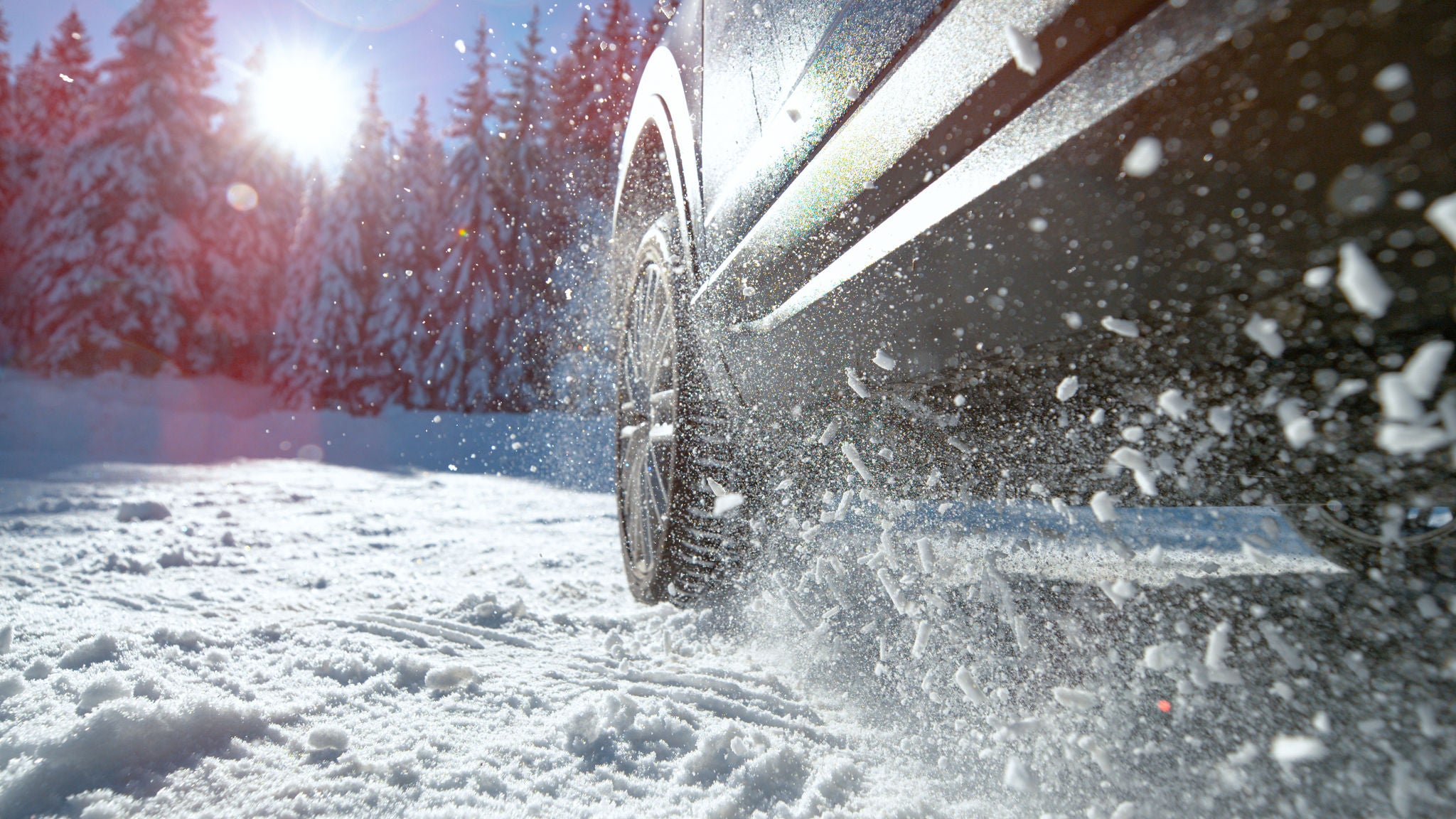
Snow, ice and sub-zero temperatures – winter has a few unpleasant surprises for motorists up its sleeve. Winter tyres are mandatory in countries such as Sweden or the Czech Republic in order to drive safely in winter. They are more wear-resistant, offer better grip and ensure safer steering. What makes winter tyres different and how do they work?

Winter tyres: The key features
Temperatures fall, and the risk of snow and ice increases. People still using summer tyres run the risk of having to pay a substantial fine as well as being a risk to road safety in general. That’s because winter tyres are at their best at the point where summer tyres reach their limits. Not just when snow falls, either. They also come into their own during wet weather as well as on dry, but cold roads.
Whether improved handling or a shorter braking distance – nothing beats them between October and Easter. Winter tyres improve stability within tracking and improve steering precision due to effective power transmission. The aquaplaning technology also assists drivers in areas with little snow but more rain.
The mixture makes the difference
Whether snow, rain, or just cold weather, winter tyres should offer one thing above everything else: maximum grip even in bad weather. That’s why all models contain a special rubber compound. What makes the difference: The high proportion of natural rubber. This makes the tyre softer and therefore provides stable traction even in cold conditions. The interaction between summer tyres changes quickly depending on temperature; they become more rigid and offer less grip. Summer tyres are less flexible in the cold and offer inferior traction and braking performance. This is even the case on a dry road.
With winter tyres, it’s different: their special composition ensures the proper degree of friction in winter. However: The softer the tyres, the greater the energy and petrol consumption, so your running costs can increase. Fillers, such as silica, and plasticisers, such as oils and resins, therefore play an essential part alongside the natural rubber. They make up around 40% of the composition of the rubber. The combination of individual components ultimately determines the hardness of the tyre and, therefore, whether it is a summer or winter tyre.
Our Expert‘s Advice:

More than 300 new rubber mixtures are prepared, checked and tested every year. They must pass various tests – both in the laboratory and on test tracks – before being used in tyres. But even the best rubber compounds eventually become so hard that grip at low temperatures begins to decrease. Nowadays, you can expect a life span of six years at most.
More grip due to a deep tread depth
Winter tyres are characterised by their deep tread thickness as well as their composition. The treads on winter tyres have wide, deep tread grooves which handle snow far better than summer tyres. When snow is compressed into the broad tread grooves, both the grip and propulsion of the car on snowy roads are enhanced. Nothing grips better to snow than snow itself.
There are also numerous zigzag cutouts on the tread surface. These edges on winter tyres – also known as lamellae – help the deep tread depth do its thing. By catching in the snow and ice, they enable more effective propulsion and improve contact with the ground. Incidentally: Lamellae also effectively transport water and protect against aquaplaning.
Our Expert‘s Advice:

The minimum tread depth on your winter tyres must not be below four millimetres. Worn running surfaces represent a genuine hazard, particularly on wet or snowy roads. The braking distance becomes longer and cornering becomes more difficult as the lamellae on the car no longer gain sufficient traction in the snow. This is a useful indicator – as well as the stated service life – for determining when a new set of tyres is needed.

